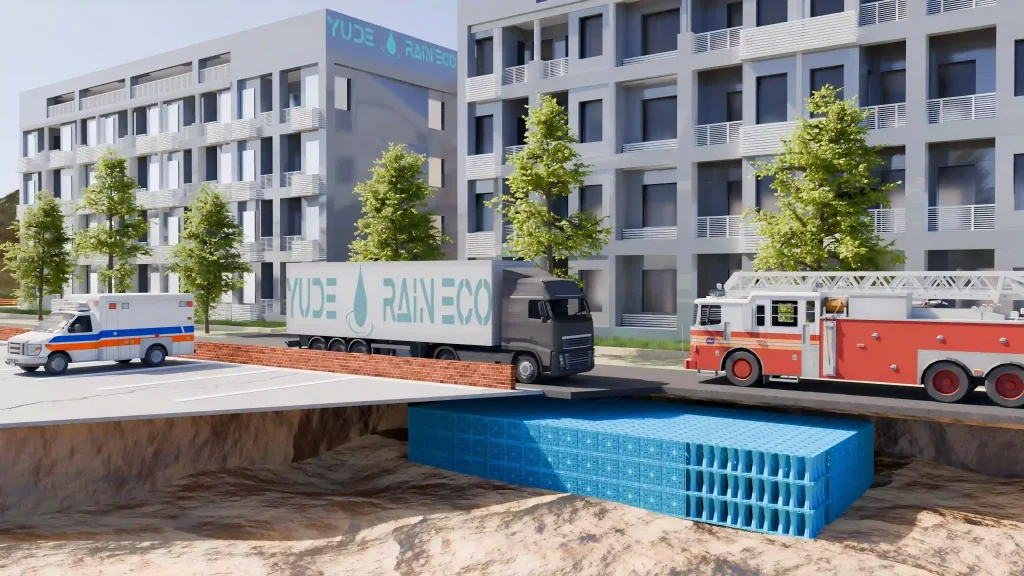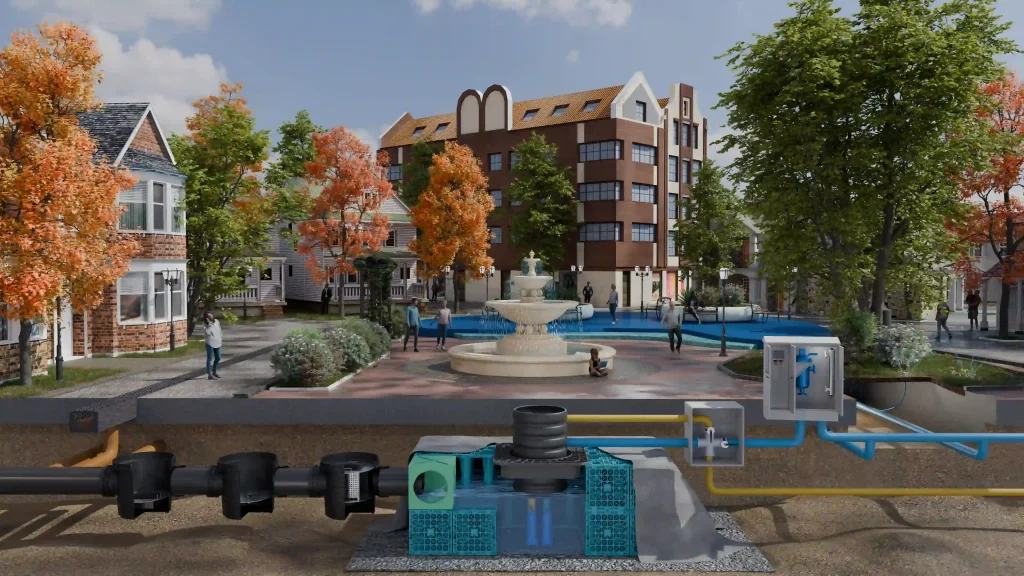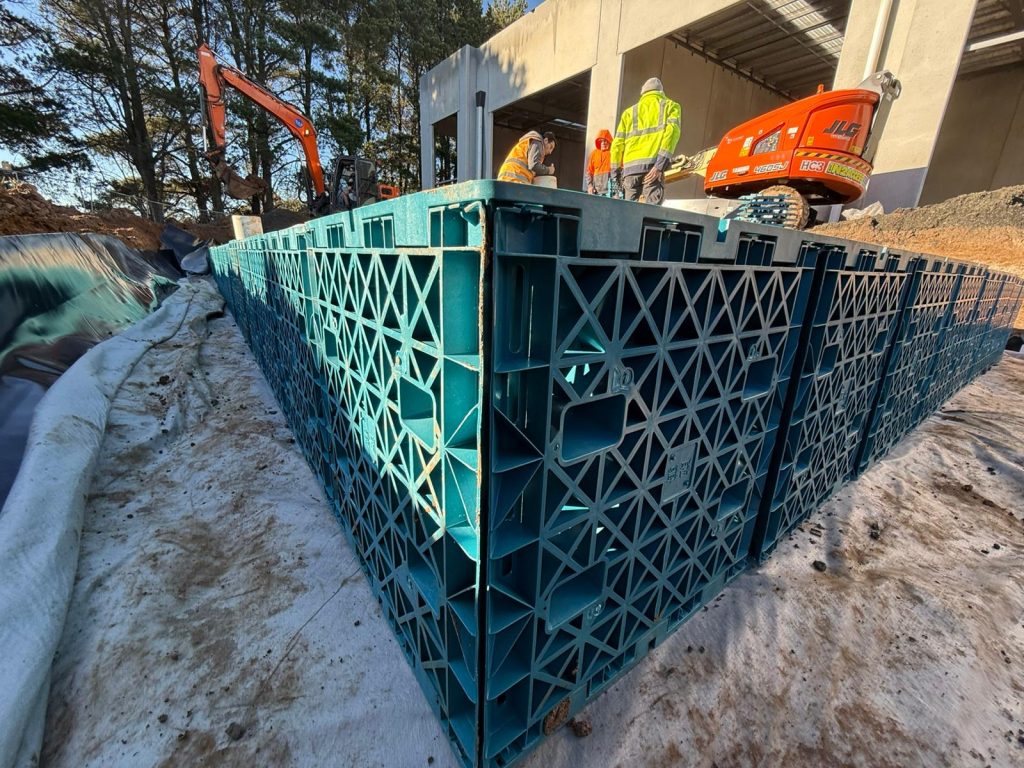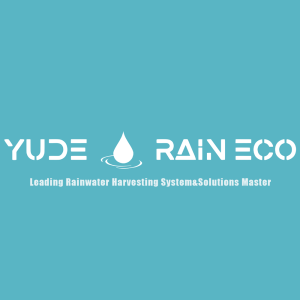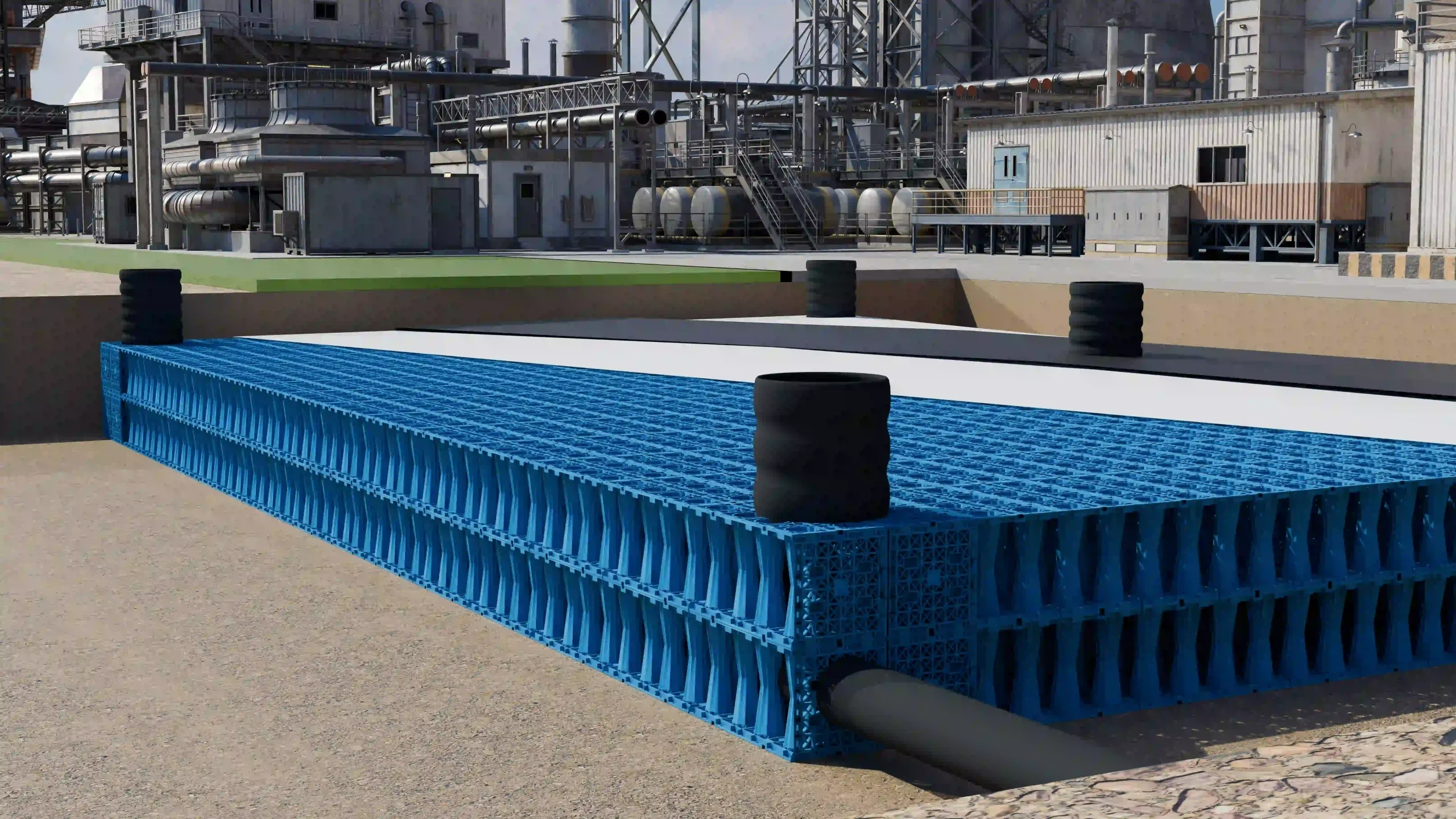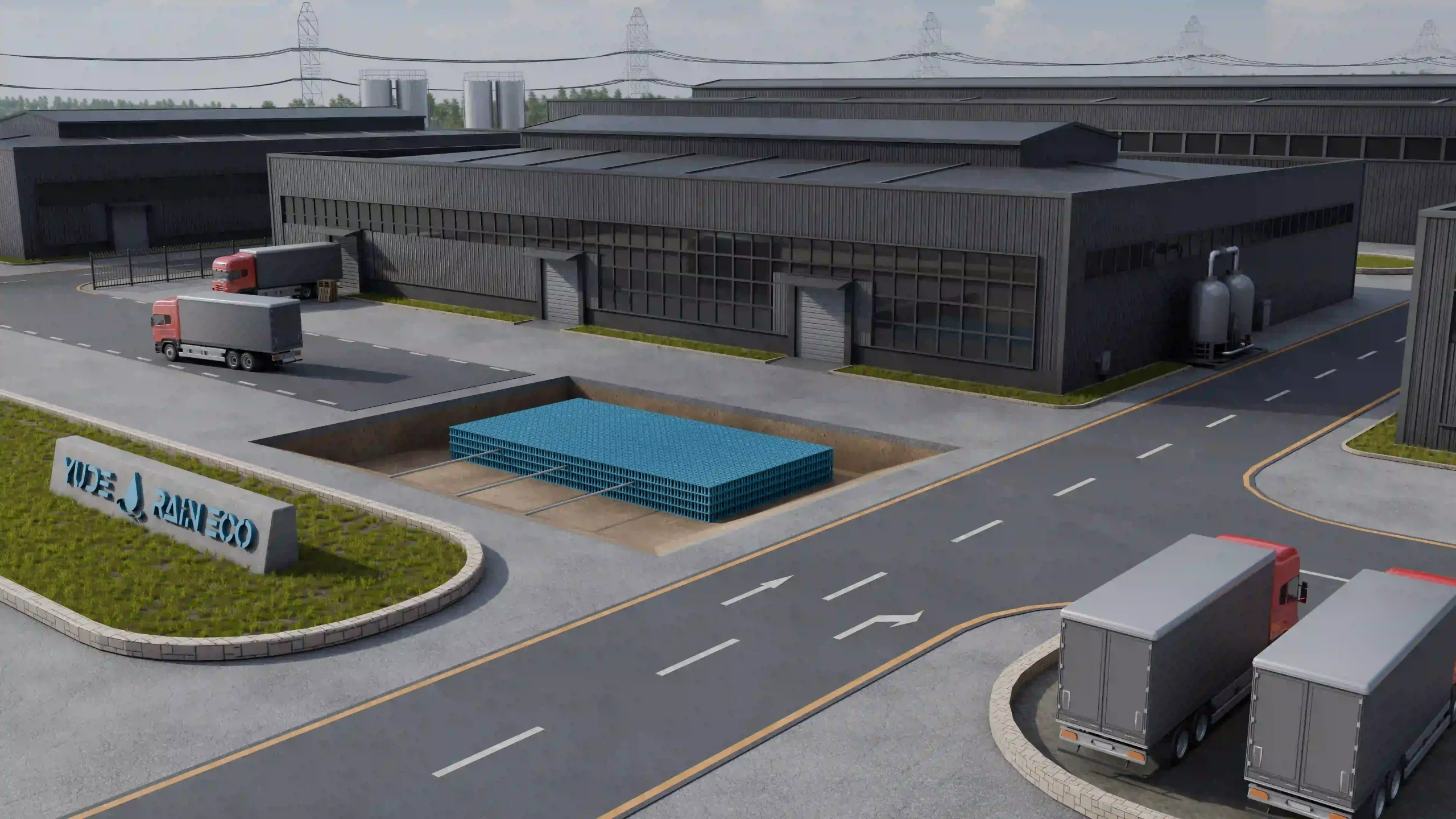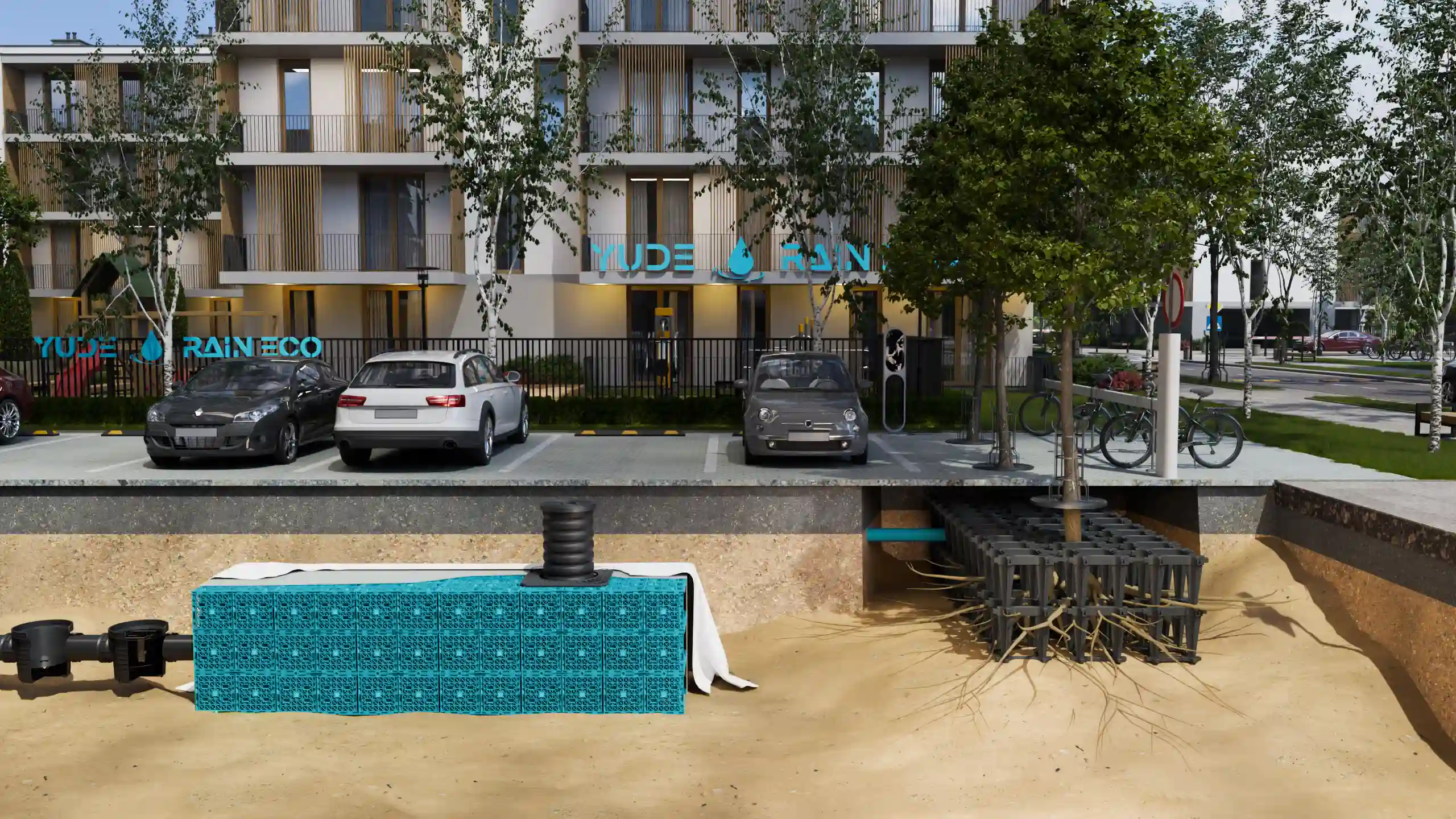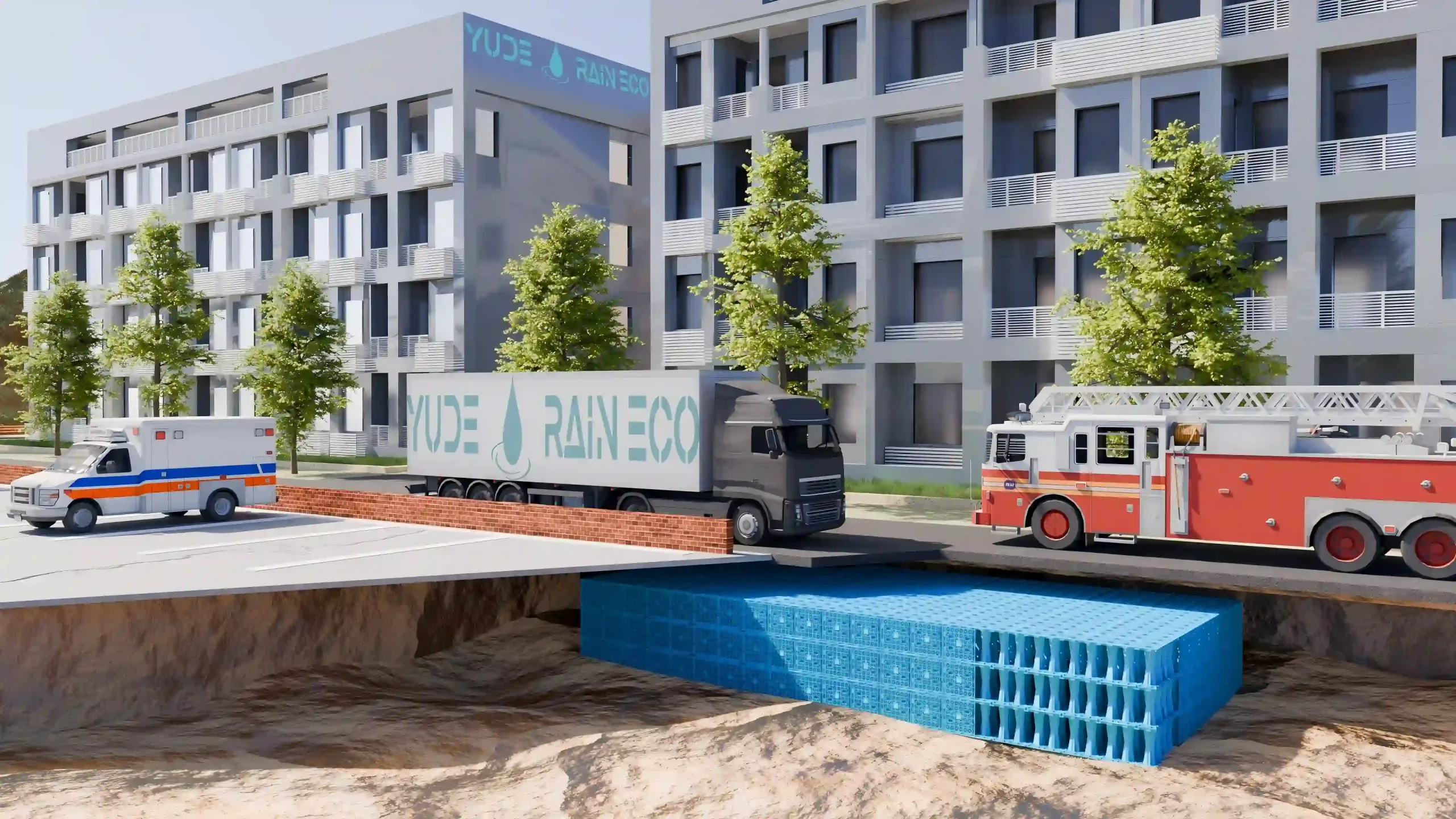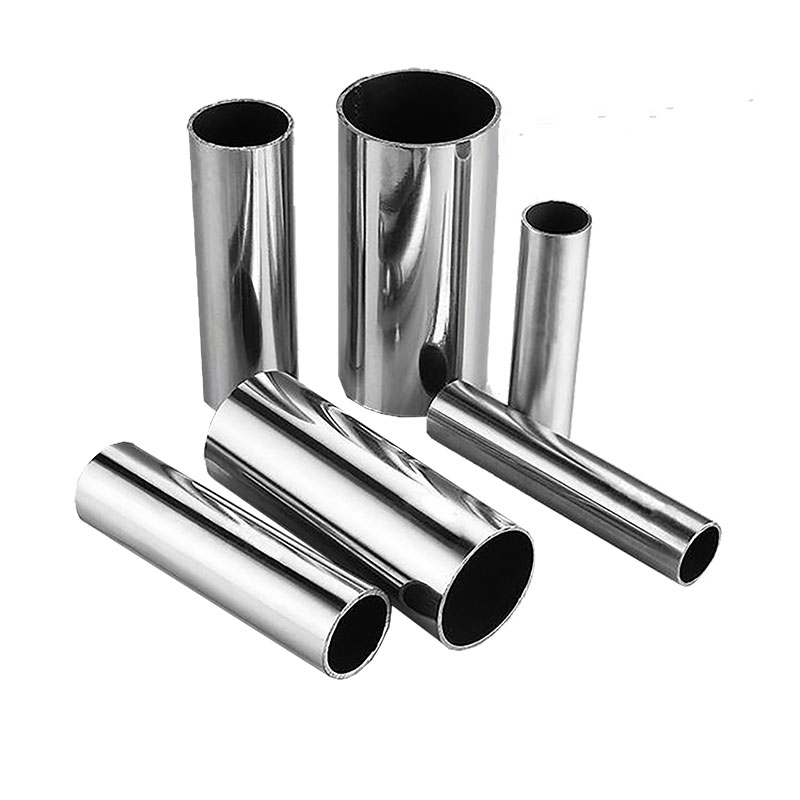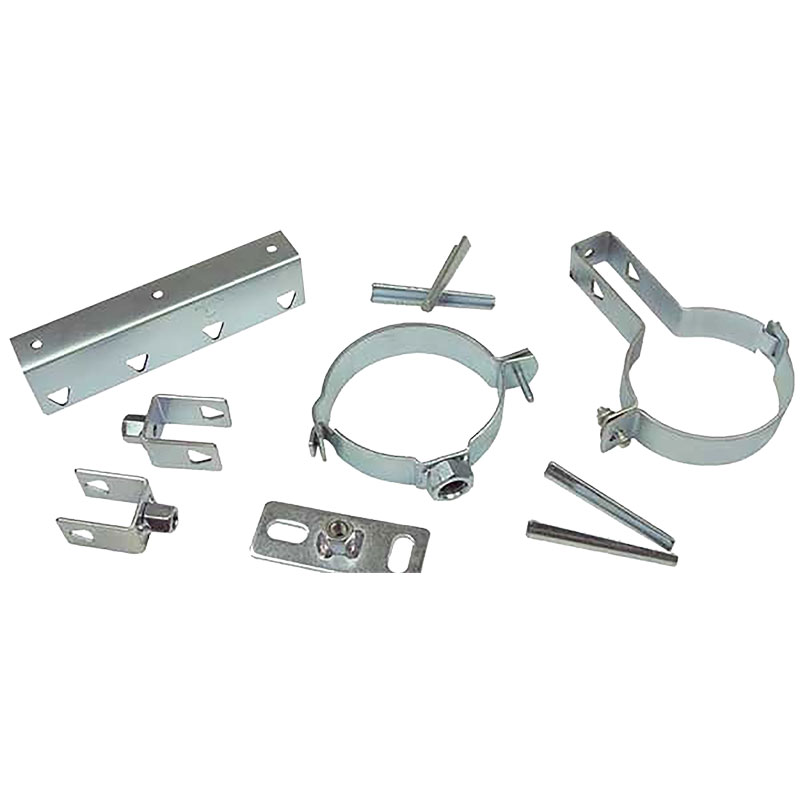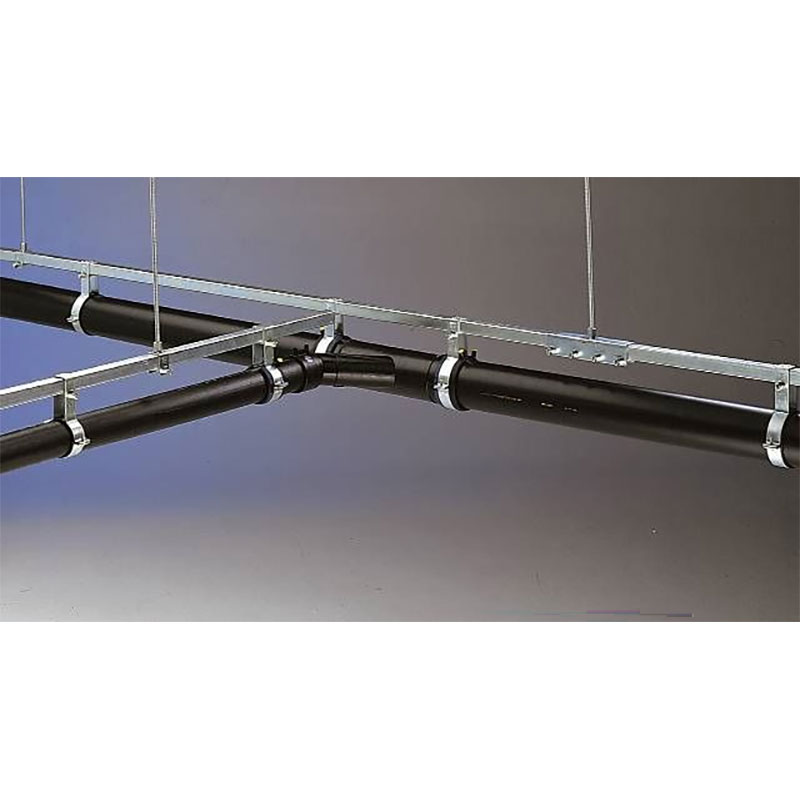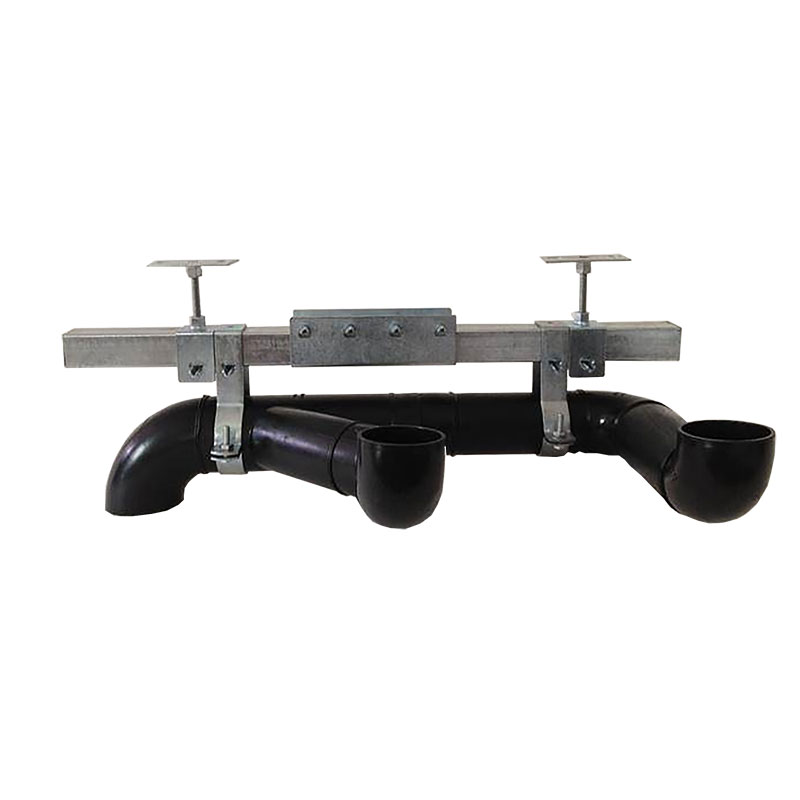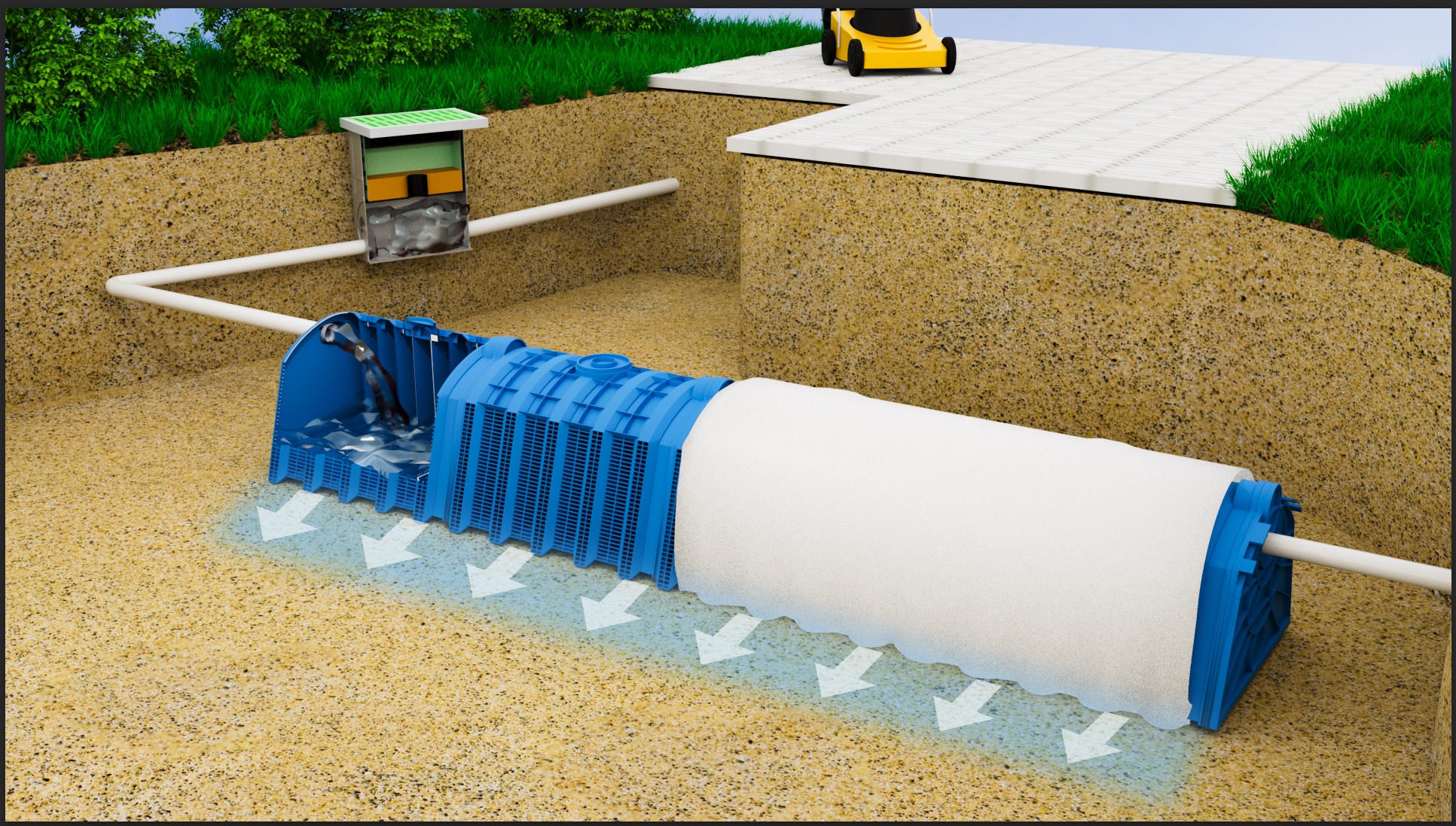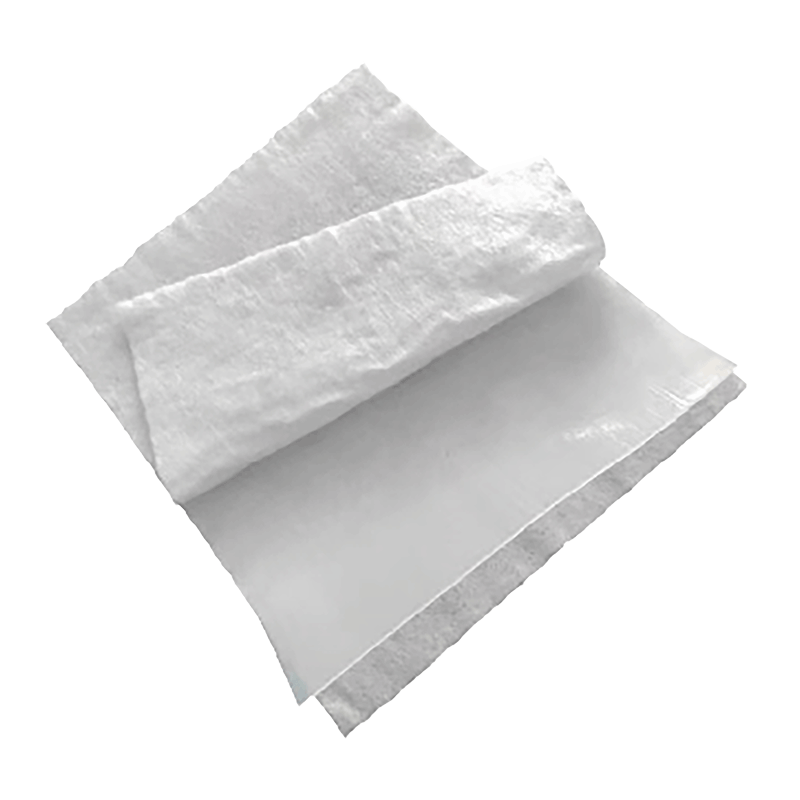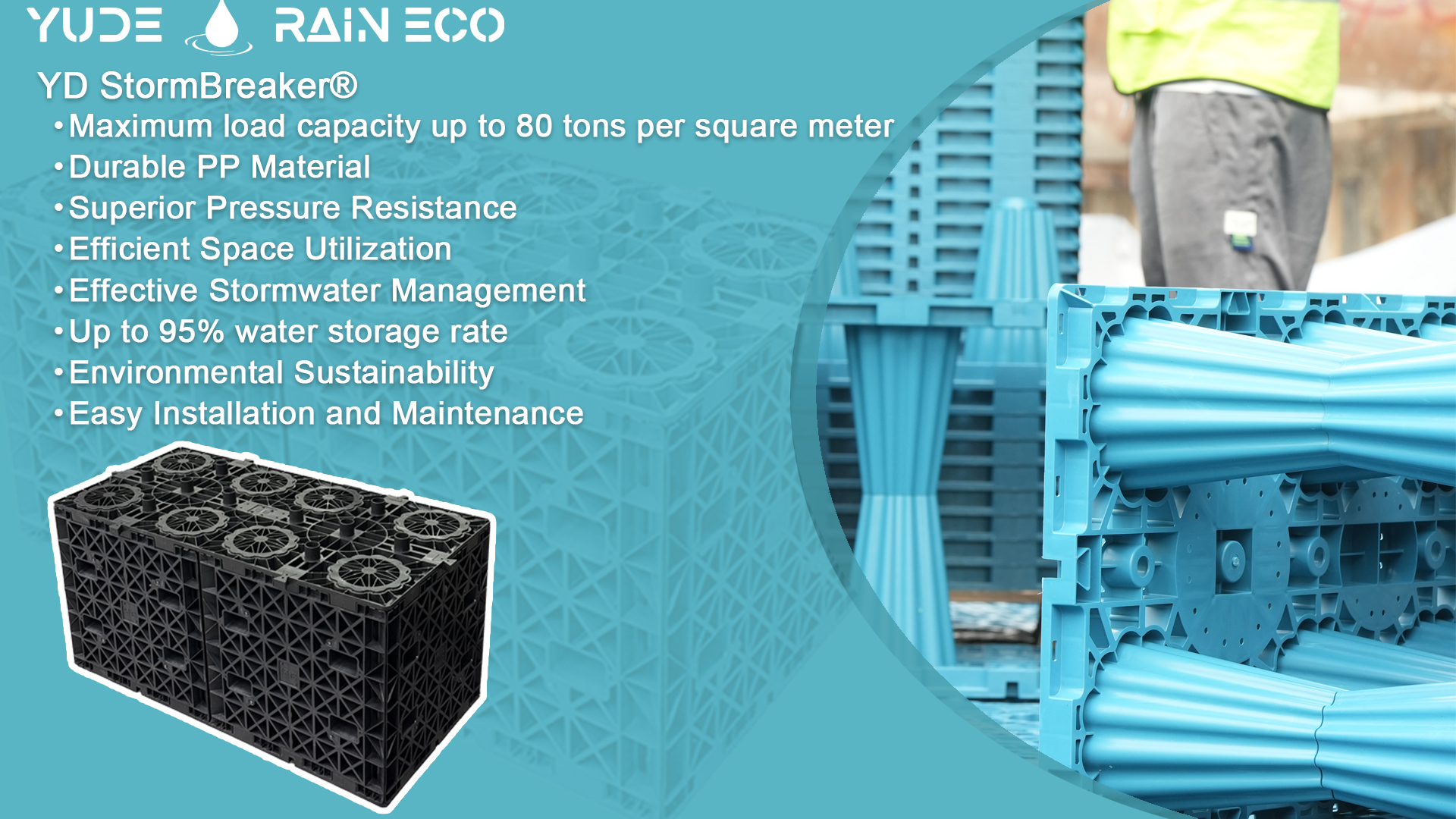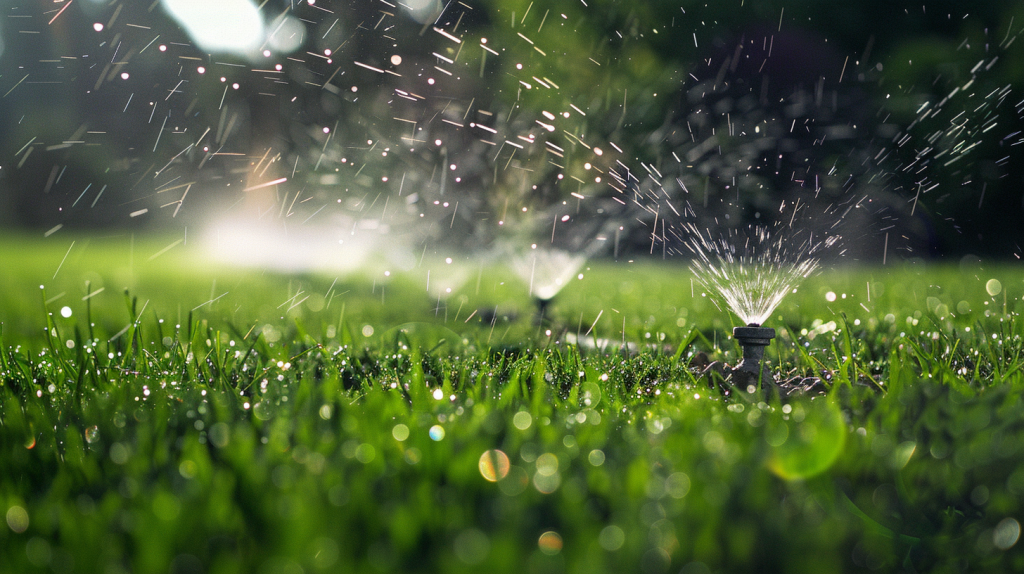Introduction
In the rapidly growing urban environments of today, managing stormwater and efficiently using water resources is no longer just a matter of compliance but also an opportunity for cost savings and sustainable development. As cities expand and the frequency of extreme weather events increases, the need for improved infrastructure becomes more pressing.
Building infrastructure, particularly stormwater management systems, plays a crucial role in ensuring the resilience of urban landscapes. This blog explores how integrating advanced stormwater attenuation tanks and rainwater harvesting systems can optimize building infrastructure, save businesses on water costs, and contribute to broader sustainability goals.
The Evolving Landscape of Building Infrastructure
As infrastructure needs evolve, so do the demands placed on stormwater management and water conservation systems. Traditional infrastructure is often inadequate to handle the increased volumes of runoff caused by heavy rainfall. With climate change leading to more frequent storms, businesses and developers need to adopt more resilient infrastructure solutions. Properly optimized stormwater management systems can significantly reduce environmental impact and provide long-term cost benefits.
Key Challenges Faced by Industry Clients
-
Flooding and Waterlogging:
Increased stormwater runoff can overwhelm drainage systems, causing localized flooding and waterlogging. This issue is particularly severe in high-density urban areas where impermeable surfaces prevent natural water absorption. Properties situated in low-lying or flood-prone areas are especially vulnerable to surface runoff, leading to significant infrastructure damage. -
Rising Water Costs:
Water usage in commercial buildings and industrial facilities often represents a significant operating cost. Without efficient water management, these costs can escalate, especially when relying on municipal water supplies. According to studies from the American Water Works Association (AWWA), water usage in commercial facilities accounts for up to 40% of operational costs, making water conservation strategies crucial for reducing overheads. -
Sustainability and Green Building Certifications:
In response to growing environmental concerns, governments and private entities are placing increasing emphasis on sustainability. Many organizations are seeking ways to meet sustainability standards like LEED (Leadership in Energy and Environmental Design) or other green certifications. Sustainable stormwater management solutions, such as rainwater harvesting and green roofs, offer viable pathways for developers and businesses to meet these certification requirements. -
Regulatory Compliance:
Building codes and stormwater regulations are becoming more stringent worldwide. In many regions, developers and property managers must comply with evolving standards related to stormwater attenuation and rainwater harvesting. Regulations, such as the EU Water Framework Directive (2000/60/EC), mandate the use of sustainable drainage systems (SuDS), placing pressure on property owners to adopt more advanced solutions to comply with environmental standards.
These challenges underscore the need for advanced solutions such as stormwater attenuation tanks and rainwater harvesting systems. Let’s explore how these systems can help meet these demands.
Why Optimize and Improve Building Infrastructure and Systems?
Optimizing building infrastructure and systems is no longer just a matter of convenience or compliance – it is essential for ensuring long-term resilience, cost-efficiency, and sustainability. With the growing challenges posed by climate change, urbanization, and rising operational costs, it has become increasingly important for developers, property managers, and businesses to focus on improving their infrastructure. Here are some key reasons why investing in infrastructure optimization is crucial:
1. Climate Resilience and Flood Prevention:
With extreme weather events such as heavy rainfall and storms becoming more frequent due to climate change, cities and buildings must adapt. Optimizing infrastructure, especially stormwater management systems, ensures that buildings can handle intense rainfall, preventing flooding and water damage. This is particularly important in urban areas where the risk of flooding due to stormwater runoff is high. Stormwater attenuation tanks and efficient drainage systems are vital to mitigate flood risks and protect both the property and the surrounding environment.
2. Water Conservation and Cost Savings:
Water scarcity is a growing concern in many regions. Optimizing water management systems, such as implementing rainwater harvesting systems, allows businesses and property owners to reduce reliance on municipal water sources. This results in significant savings on water bills. By capturing and reusing rainwater for non-potable purposes like irrigation and cooling, buildings can drastically cut costs while promoting sustainable water practices. As per WaterSense, using rainwater for non-potable purposes can reduce a building’s water bill by 30-50%.
3. Regulatory Compliance and Green Certifications:
As environmental regulations become more stringent, cities and countries are introducing new standards for stormwater management and water conservation. By optimizing infrastructure, building owners ensure that their properties meet these regulations and avoid potential fines or penalties. Additionally, adopting sustainable practices such as rainwater harvesting and green infrastructure can help buildings achieve LEED (Leadership in Energy and Environmental Design) and other green building certifications, increasing the property’s value and attractiveness to eco-conscious tenants and investors.
4. Enhancing Property Value and Market Appeal:
Sustainably optimized buildings tend to have higher market value, as they offer long-term operational savings and appeal to tenants and buyers who prioritize sustainability. Improved infrastructure can also help buildings stand out in a competitive real estate market, particularly as businesses and consumers are increasingly making eco-friendly decisions. Optimized systems like rainwater harvesting and stormwater attenuation not only improve the functionality and resilience of the building but also contribute to an improved reputation as a responsible, green business.
5. Long-Term Sustainability:
Investing in the improvement of building infrastructure ensures that the systems in place can handle future demands without needing constant repairs or replacements. Optimizing stormwater systems, for example, helps prevent the wear and tear that often results from overburdened traditional drainage systems. This proactive approach extends the lifespan of infrastructure, reduces long-term maintenance costs, and supports the building’s overall sustainability goals.
Our Stormwater Management Solutions: Enhancing Building Infrastructure
Yude Rain Eco offers comprehensive solutions to address stormwater management and water conservation needs. Our range of stormwater attenuation tanks, rainwater harvesting systems, and drainage solutions are designed to help building owners, developers, and municipalities meet sustainability goals while optimizing infrastructure performance.
1. Stormwater Attenuation Tanks: A Solution to Urban Flooding
Stormwater attenuation tanks are designed to manage the temporary storage and controlled release of stormwater, reducing the risk of flooding. These systems are ideal for urban environments where heavy rainfall can overwhelm traditional drainage infrastructure.
Key Features:
-
Flood Prevention: Attenuation tanks capture and store excess stormwater, which can be gradually released to prevent flooding.
-
High Storage Capacity: These systems are designed to handle large volumes of water, ensuring that even during extreme weather events, drainage systems can cope with the load.
-
Compliance with Regulations: Our systems are engineered to meet the latest stormwater regulations, ensuring your projects stay compliant.
-
Space Efficiency: By integrating underground storage, attenuation tanks free up valuable surface space for other uses.
Benefits for Building Infrastructure:
-
Minimize Flood Risks: Reduces the likelihood of waterlogging and flooding in basements, parking lots, and other low-lying areas.
-
Long-Term Durability: Designed to withstand varying weather conditions, these systems offer long-term protection against water damage.
-
Cost-Effective: Prevents the need for costly flood damage repairs and minimizes reliance on municipal stormwater systems.
2. Rainwater Harvesting Systems: Sustainable Water Conservation
Rainwater harvesting systems offer a sustainable way to reduce dependency on municipal water supplies by capturing and storing rainwater for non-potable uses. These systems are particularly beneficial for buildings in areas where water scarcity is a concern or where operational costs are high.
Key Features:
-
Collection and Filtration: Captures rainwater from roofs and other surfaces, filters it for use in irrigation, cooling systems, or even for toilet flushing.
-
Storage Tanks: Large-capacity storage tanks ensure that water is available during dry spells or between rainfall events.
-
Low Maintenance: Designed for easy installation and minimal maintenance, these systems can be operated efficiently for years.
-
Smart Technology Integration: Some systems come equipped with smart sensors to monitor water levels and ensure efficient use.
Benefits for Building Infrastructure:
-
Significant Cost Savings: Reduces water bills by using harvested rainwater for non-potable applications.
-
Environmental Impact: Promotes water conservation, reduces demand on potable water supplies, and lowers the carbon footprint of building operations.
-
Regulatory Compliance: Helps meet water conservation goals and supports green building certifications such as LEED.
3. Drainage Solutions: Managing Water Flow Efficiently
In addition to attenuation tanks and rainwater harvesting systems, drainage solutions are integral to managing stormwater runoff effectively. Whether it’s through the installation of permeable pavements, bioswales, or infiltration trenches, our solutions are designed to reduce the volume of stormwater runoff and promote groundwater recharge.
Key Features:
-
Infiltration Solutions: Allows water to percolate into the ground, replenishing groundwater supplies and preventing excess runoff.
-
Sustainable Design: Incorporates environmentally friendly materials and techniques that align with sustainability goals.
-
Customizable to Site Needs: Each drainage solution is tailored to the specific needs of the site, ensuring the most effective water management approach.
Benefits for Building Infrastructure:
-
Flood Risk Reduction: Prevents runoff from overwhelming drainage systems, reducing the risk of urban flooding.
-
Water Quality Improvement: Filters stormwater runoff to improve water quality before it reaches local water bodies.
-
Increased Property Value: Well-designed drainage systems enhance the overall value and sustainability of properties.
Technical Architecture: How Our Stormwater Solutions Work
Our stormwater management systems are designed to function cohesively, optimizing water storage, infiltration, and reuse. Here’s an overview of the technical architecture:
-
Rainwater Collection: Rainwater is captured from rooftops and impervious surfaces, directed to collection points via gutters and downspouts.
-
Filtration and Storage: Water passes through filtration systems that remove contaminants before being stored in rainwater storage tanks or stormwater attenuation tanks.
-
Controlled Release: Stormwater that exceeds storage capacity is gradually released into municipal drainage systems or underground infiltration systems, preventing flooding.
-
Smart Monitoring: Real-time data is collected to track water levels, flow rates, and system performance, ensuring optimal efficiency and maintenance scheduling.
Applications: How Our Solutions Work in Practice?
Our solutions have been successfully implemented in a wide range of commercial, residential, and municipal projects. Here are some real-world applications:
1. Commercial Building Retrofit:
For a large office complex located in a flood-prone area, our stormwater attenuation tanks were installed beneath the parking lot. These tanks capture excess stormwater during heavy rainfall, preventing flooding in the building’s basement and reducing the load on municipal systems. The addition of a rainwater harvesting system provides water for irrigation, further reducing the building’s reliance on municipal water.
2. Urban Park Development:
In a major urban park redevelopment, our rainwater harvesting systems were integrated to capture rainwater for irrigation and landscape watering. This project saved the city significant water costs while also meeting LEED certification requirements for green building practices. The installation of stormwater attenuation tanks ensured that the park remained flood-free during extreme weather events.
3. Industrial Facility Water Management:
For a manufacturing facility, we provided a comprehensive drainage solution combined with stormwater attenuation tanks. This system effectively managed the large volumes of stormwater runoff from the facility’s expansive paved surfaces, preventing flooding and reducing water management costs.
FAQ (Frequently Asked Questions)
Q1: What is a stormwater attenuation tank, and how does it help prevent flooding?
A1: A stormwater attenuation tank is a storage system designed to capture and temporarily store excess stormwater during heavy rainfall. It then releases the water slowly to prevent flooding and reduce pressure on municipal drainage systems.
Q2: How does a rainwater harvesting system reduce water bills?
A2: Rainwater harvesting systems capture and store rainwater for non-potable uses such as irrigation, cooling, and cleaning. This reduces the need to purchase municipal water, lowering overall water bills.
Q3: Can stormwater attenuation tanks be installed in existing buildings?
A3: Yes, our stormwater attenuation systems can be retrofitted into existing buildings, providing an effective solution for flood prevention and water management without requiring major construction projects.
Q4: Are your drainage solutions customizable?
A4: Absolutely. We offer tailored drainage solutions that are designed to meet the unique needs of each site, ensuring optimal water flow management and compliance with local regulations.
Q5: How do I know which stormwater system is right for my project?
A5: Choosing the right system depends on various factors, including the size of your site, local rainfall patterns, regulatory requirements, and water management goals. Our team at Yude Rain Eco offers free consultations to assess your needs and recommend the most efficient solution for your property.
Q6: How long do stormwater attenuation tanks last?
A6: Stormwater attenuation tanks from Yude Rain Eco are built to last for decades. Made from corrosion-resistant materials, they have an expected lifespan of 50 years or more. Regular maintenance can extend their functionality, ensuring long-term performance and reliability.
Q7: Can your systems be installed in existing buildings?
A7: Absolutely! Yude Rain Eco’s stormwater systems are highly adaptable and can be retrofitted into existing properties, whether commercial, residential, or industrial. Our modular design allows for easy installation without significant disruption to the existing infrastructure.
Q8: What are the benefits of using rainwater harvesting systems in commercial buildings?
A8: Rainwater harvesting systems in commercial buildings offer significant cost savings by reducing water bills, especially for non-potable uses like irrigation and cooling. They also help businesses meet green building certifications (e.g., LEED), lower carbon footprints, and comply with increasing regulations on water conservation.
Call to Action Optimization
Ready to future-proof your building with state-of-the-art stormwater management solutions? Whether you’re tackling urban flooding, optimizing water use, or meeting sustainability goals, Yude Rain Eco offers tailored solutions designed for long-term performance and cost savings.
-
Contact our technical team today for a personalized consultation on your project’s stormwater needs.
-
Request a free quote for stormwater attenuation tanks, rainwater harvesting systems, and drainage solutions.
-
Learn more about our customizable systems and how they can integrate seamlessly into your building’s infrastructure.
Let’s work together to create resilient, eco-friendly infrastructure that meets modern challenges. Reach out now for more details.

